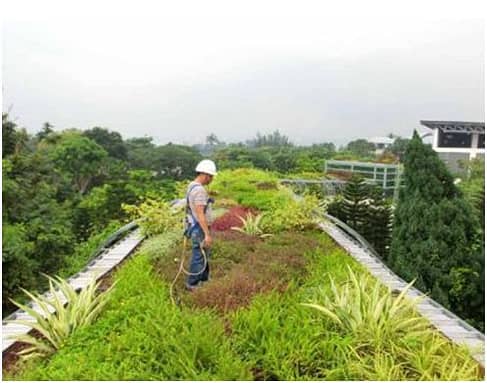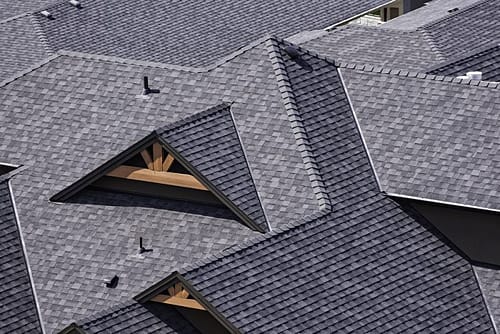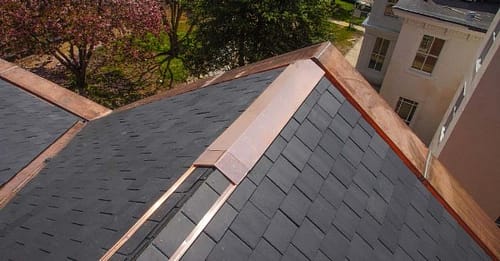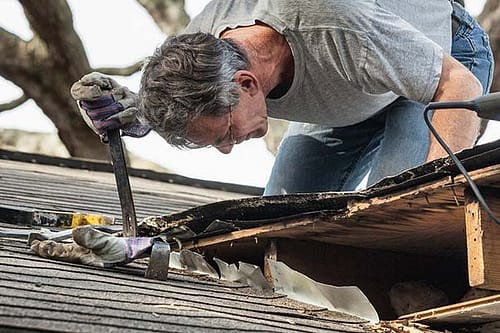The shelter forms a protective layer between the roof covering and the insulation material. It protects the insulation material and the underlying roof construction against the ingress of moisture, dust, and wind.
Lower roofs are often confused with vapor barriers. Completely unfair because both protect the insulating material against moisture penetration in a completely different way.
The vapor barrier blocks vapor from the inside of the house, the shelter blocks moisture from the cold side (rain, drifting snow) but is vapor-permeable. Any moisture that is present in the insulation can, therefore, evaporate through the roof.
What does good accommodation have to meet?
Watertight:
The amount of water that can be retained by rigid shelter plates is approximately 2% of the total amount of precipitation that ends up on the roof. If more water breaks through the roof covering, then problems will arise in the form of leakage.
Airtight/windproof:
To reduce energy losses as much as possible, airtightness is one of the most important issues in thermal insulation. Still, the air is a good insulator and therefore it is important that roofs are protected against the wind.
Vapor-open
A good shelter is a water and windproof but vapor-open. Moisture contained in the insulation must be given the opportunity to evaporate outside. Otherwise, the insulation would become damp and lose its insulation capacity. Also, fungi can develop in the insulation material, which is very undesirable.
Different types of roofs:
There are different types of materials that are suitable to serve as shelter. We can roughly distinguish two categories: foils and sheet material (semi-rigid and rigid roofing sheets).
Foil as shelter:
Shelter films are usually made from polyethylene, polyester or polypropylene. To promote the rigidity of the film, plastic fibers are often added to the material. Films can also be provided with an additional reinforcement layer, which considerably reduces the chance of tearing. A good underlay foil is provided with micro-perforations and is therefore vapor-open.
Advantages: Affordable price, easy to apply, easy to transport.
Disadvantages: Risk of perforation (or cracks), to be applied less tightly than rigid plates.
Semi-rigid plastic plates:
Semi-rigid plates are usually made from synthetic materials (a combination of polypropylene and polyethylene). They can be provided with micro-perforations on one side or on both sides, which makes these plates, just like roofing films, very vapor-open.
Advantages: sturdy, cheaper than rigid insulation boards, insulating properties, light material, easy to install.
Disadvantages: can sometimes bend when applying insulation from the inside.
Fiber cement plates:
Fiber cement sheets are made from plastic fibers, natural fibers, and portland cement. They are strong cover plates with a very good vapor permeability and a very long service life. They are laid overlapping; the lower the roof pitch, the greater the overlap. Lateral seams are covered with a special sealing tape.
Advantages: Strong, good vapor permeability, cheaper than wood fiber panels, can already be used on roof slopes from 5°, and it can be exposed to rain and wind for up to a month (as an emergency roof during renovation).
Disadvantages: Much less insulation than wood fiberboards, more expensive than shelter foil.
Wood fiberboards:
The main component of wood fiberboards is wood fibers that come from sawing waste (tree sawmills, factories, etc.). Depending on the type of wood fiberboards, substances such as bitumen, latex, paraffin or polyurethane glue can still be added. Wood fiberboard usually has a tongue and groove connection. The joints do not have to be sealed because the material has a natural shrinking and expansion capacity.
Advantages: Environmentally friendly, recyclable, good heat storage, high vapor permeability, can be exposed to rain and wind for 3 to 12 months.
Disadvantages: More expensive than foil or plastic plate, only for roof slopes from 15°.




